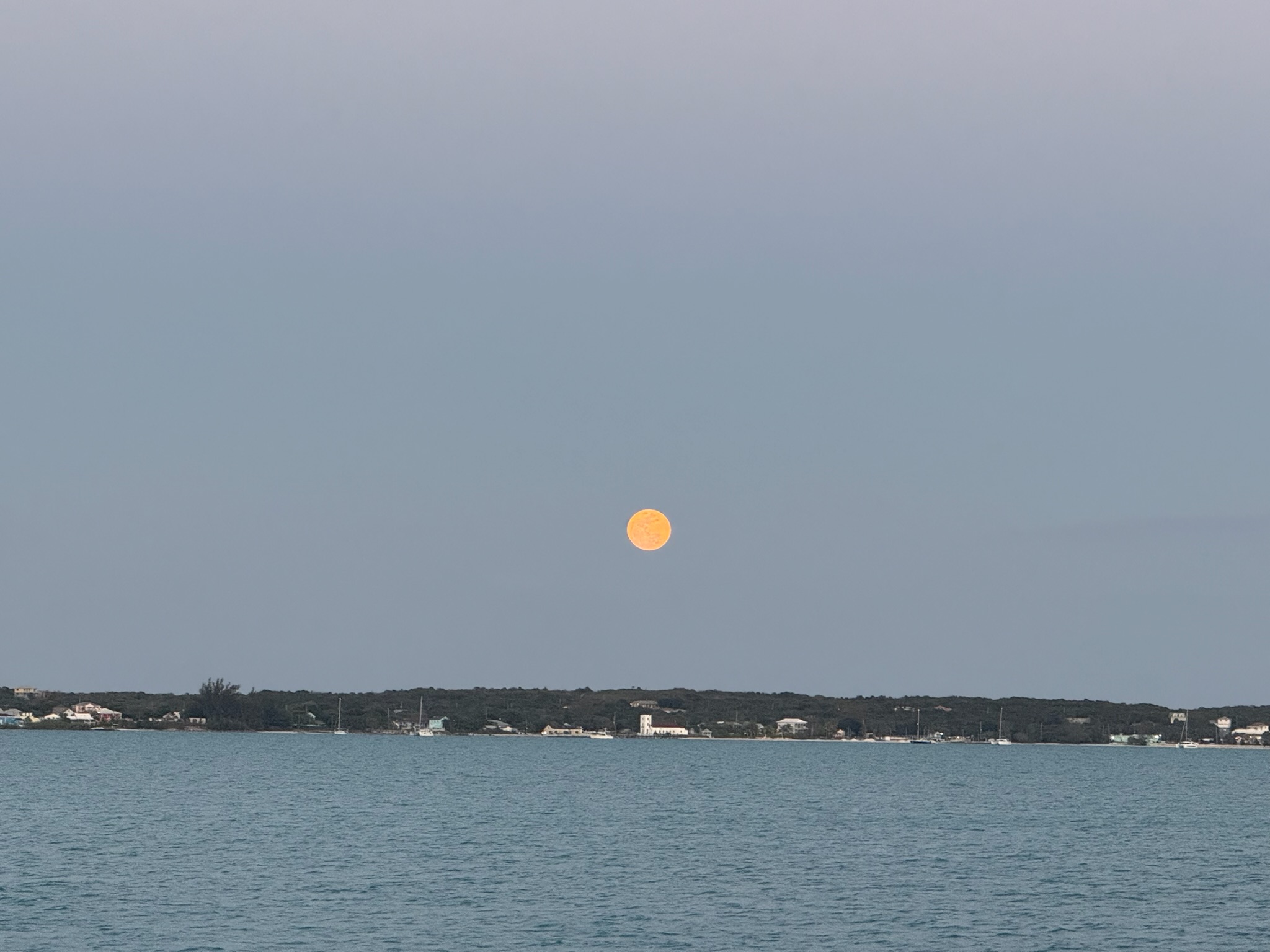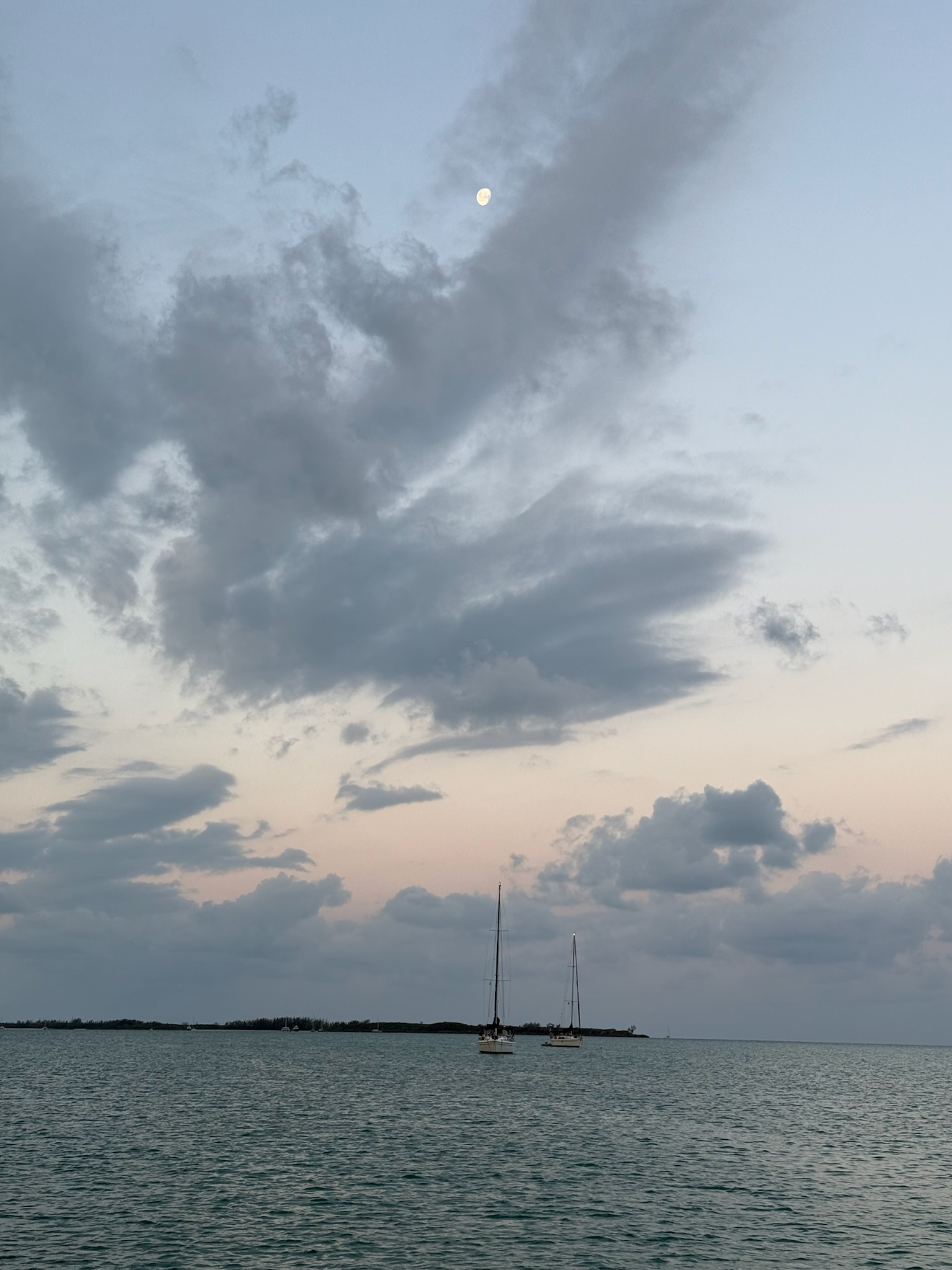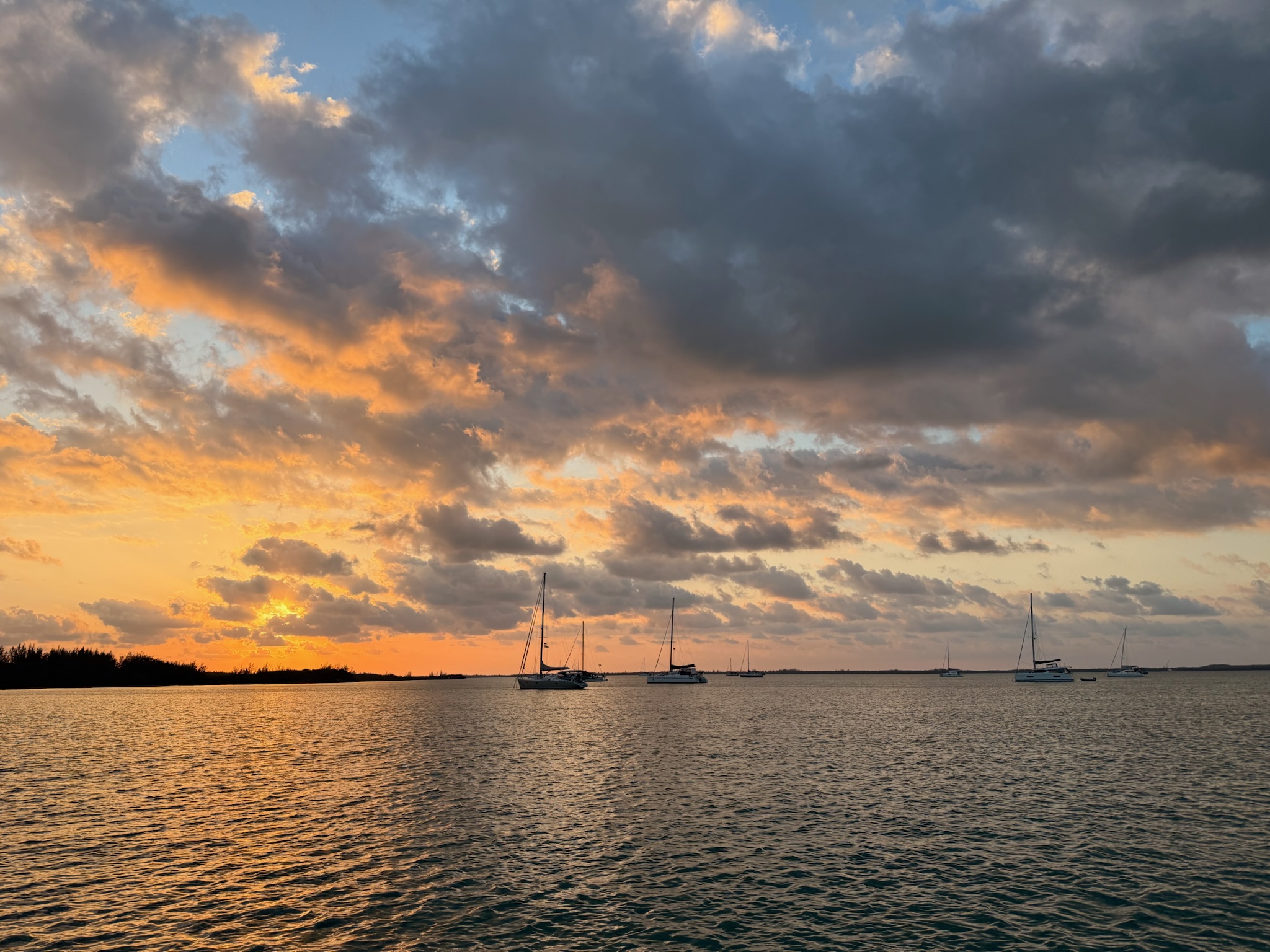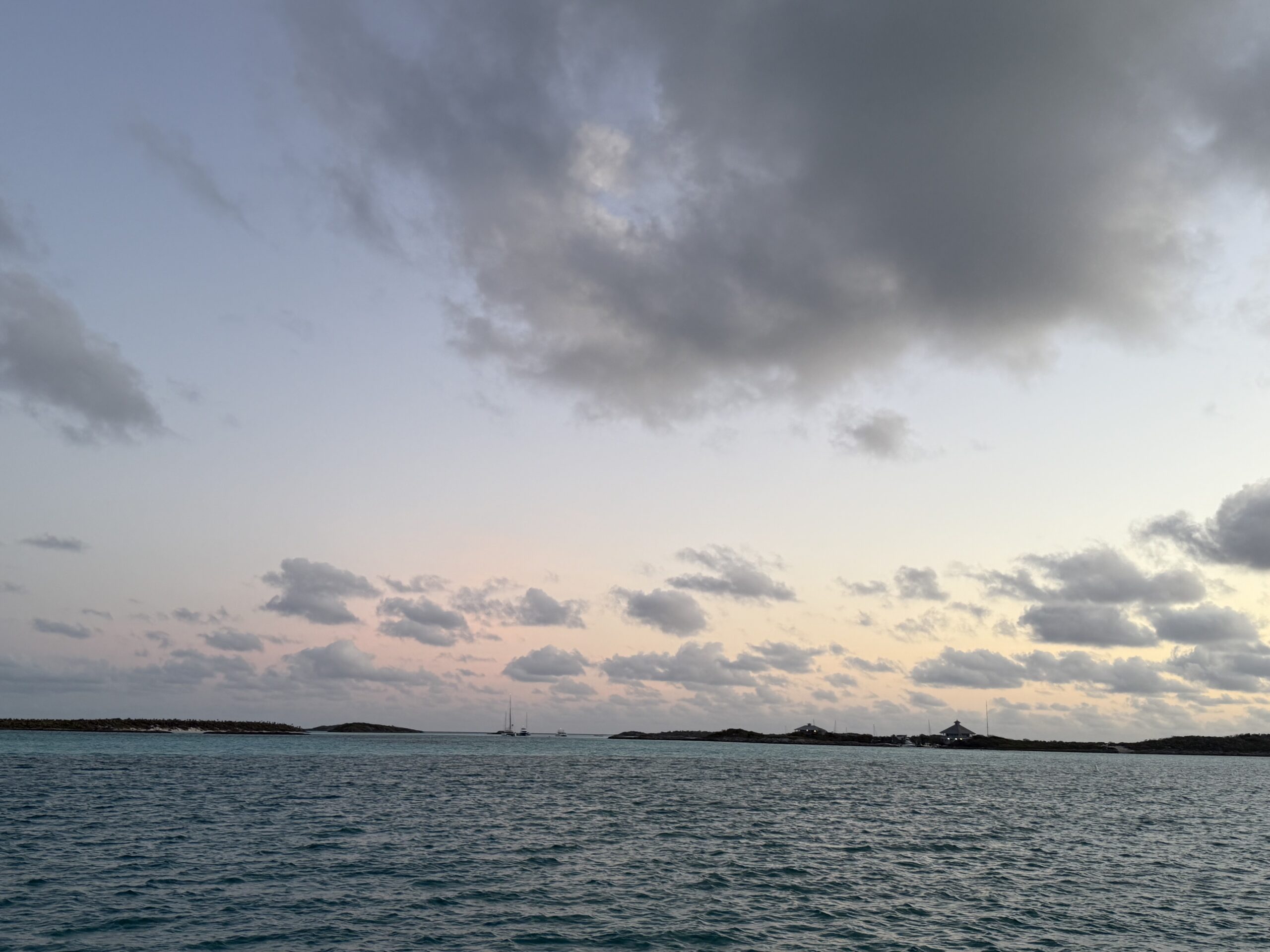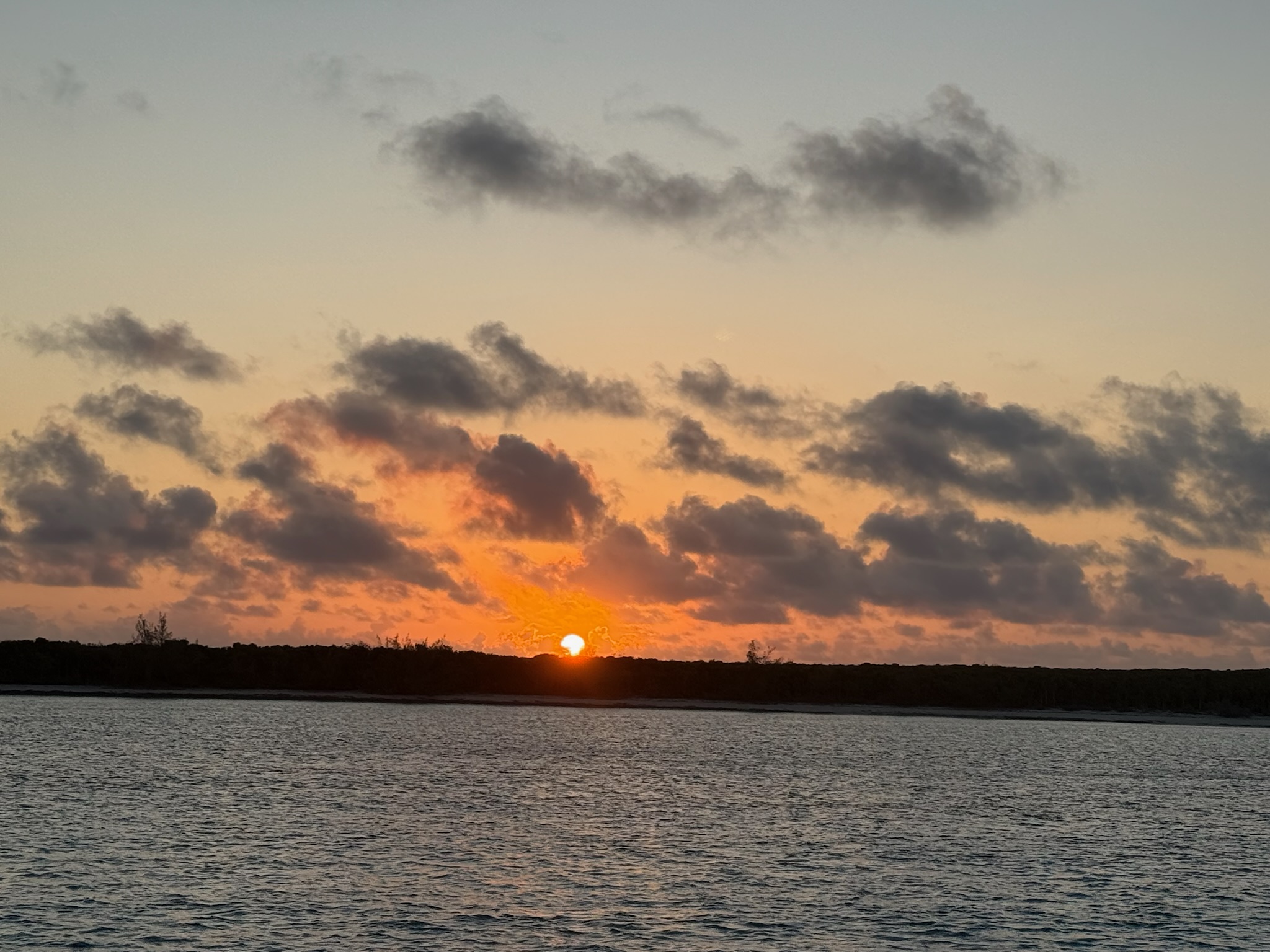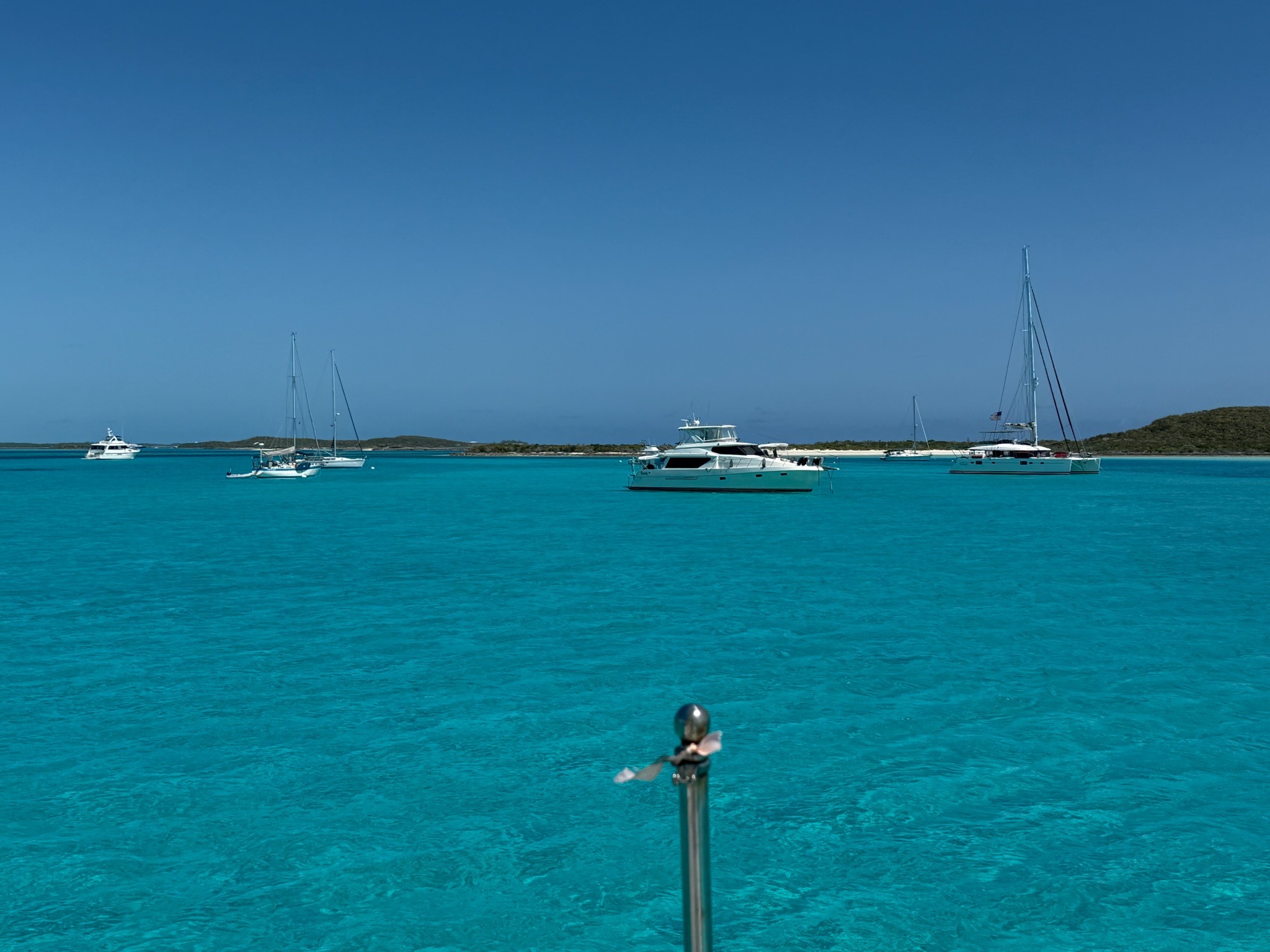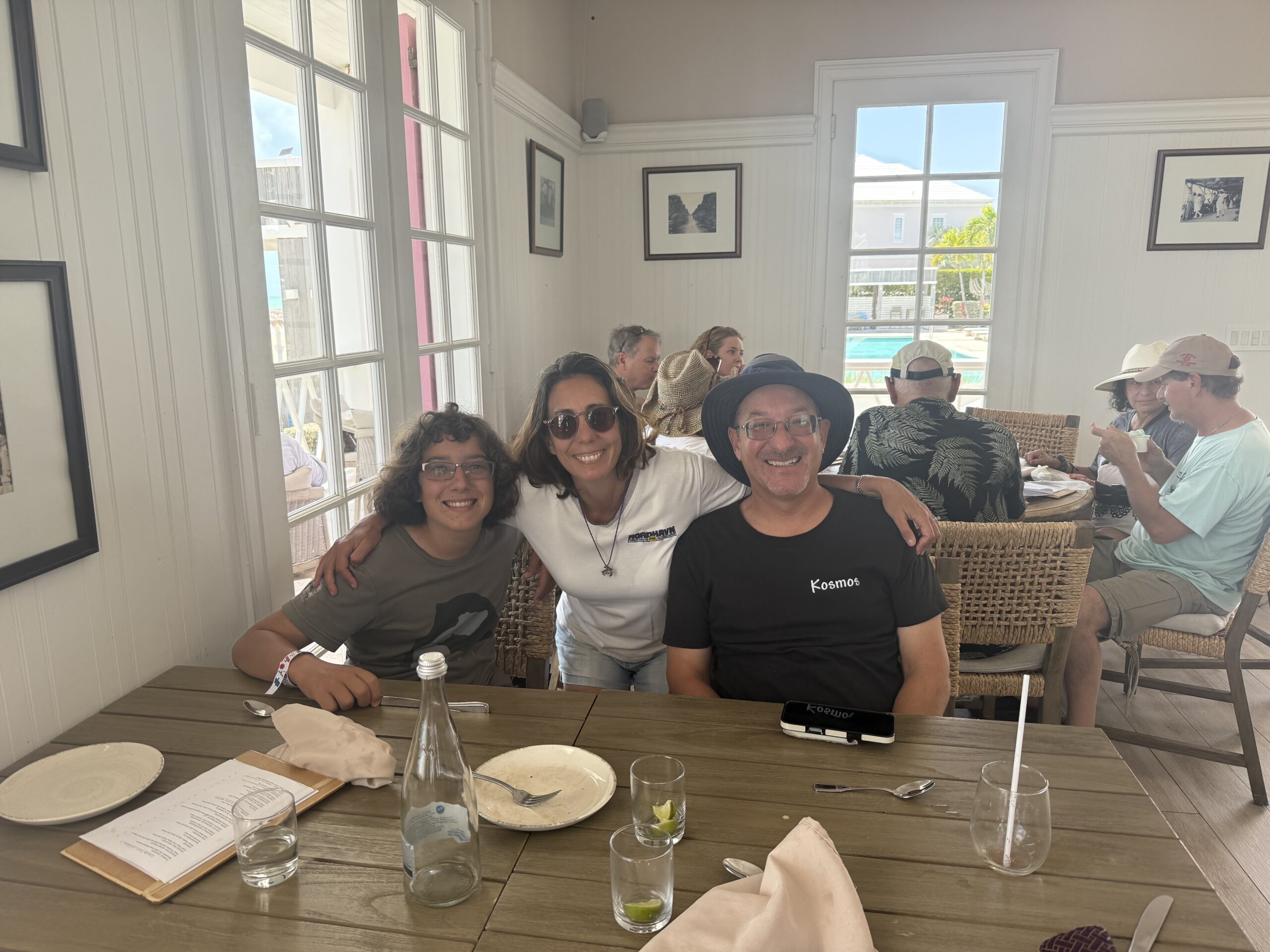This week has been fun. On Saturday, mom and dad finished cleaning the bottom of the boat, then we went to town for lunch. We went to all the restaurants and all of them were closed except for the yacht club.

Cette semaine était amusante. Samedi maman et papa ont fini le nettoyage du dessous du bateau et nous sommes allés au village pour le déjeuner. On est allé à tous les restaurants, mais seulement le yatch club était ouvert.

On Sunday, we moved to a new anchorage called Cambridge Cay to meet up with our friends from Baja, Oceananigans. We went over to the beach with them and some of their friends, Kepler and Cosmic Connection, and had a fun time. On Monday, we snorkeled around a rock near the boat. We saw a few fish, and even a baby turtle. In the evening, we went to the beach again.
Continue reading
